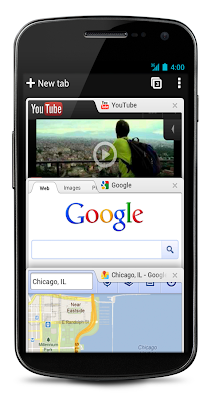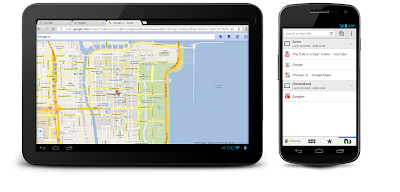SATURDAY, APRIL 23, 2011 AT 6:00AM
Danger Room has an article about the
Army exploring the use of Android smartphones and apps as soldier devices.
If I had a nickel for every time a soldier in theater asked why the Army can't come up with a tactical version of a Blackberry or iPhone for battlefield use, I'd have a lot of nickels. So it is good to see the Army experimenting more with this sort of soldier-level commercial technology, particularly after the history of failures and half-successes that has been the Land Warrior (now Nett Warrior) program.
As an open-source application, Android has a huge advantage for government adoption, since it doesn't rely on a closed, proprietary interface which means many developers can contribute. The military is starting to use Linux on a number of platform applications for that reason, so Android is a logical extension into the mobile computing domain.
It isn't as simple as just buying a bunch of smartphones and whipping up some military-specific Android apps, though. Let's examine a few of the challenges facing military mobile computing:
(1) The network itself. In a lot of places the military goes, there is no network to tap into. The military has to bring its own. We take for granted our cell phone and data services with their wide coverage areas, because we have a huge investment in the fixed infrastructure that supports it. Imagine you need to buy not only phones, but mobile cell towers, routes, and all the communications and power devices to go with them, be able to deploy them, set them up, and operate them in an austere environment. That's what military mobile computing is up against. There are some work-arounds. If you deploy to an area with infrastructure, you can use that -- even Afghanistan is starting to get ubiquitous Roshan cell phone towers and service. Of course, you need to make sure the other side doesn't turn the service off on you (see point #2). You could use your vehicles as mobile hot spots, eleveraging their long-range communications and satellite comms to serve as your network. That might be more workable -- provided you can bear the cost of outfitting each vehicle to serve as a network hotspot, with its own electrical power and bandwidth challenges.
(2) Information assurance and security. You want your information to travel unmolested, arrive intact, only be usable to you. If you find dropped calls annoying, imagine it in the middle of a firefight. And you don't want the enemy to be able to easily eavesdrop on your network, use it to track your troops, or otherwise compromise your information -- something we're so good at, the Taliban makes cell phone providers in Afghanistan shut their services off at night so they can't be tracked. Now, admittedly, we in the military do tend to overclassify things. There's not much in a squad level action that is tactically exploitable except in real time, but over time many of those actions show patterns that good intel analysts can exploit. So your mobile network needs a way to both mask itself and effectively encrypt its data.
(3) Hardening. The commercial cell phone isn't designed to operate in a military environment, with the dust, high and low temperatures, moisture, shock, vibration, dropping, getting kicked, getting hit by other equipment, or getting beat up carried around in an ammo pouch. While with a little care my iPod Touch survived my last eployment just fine, I wasn't using it for tactical communications.. That environment it why military equipment tends to be a bit big and clunky (the need for it to work when the user is wearing gloves or a chemical suit is another big reason), as well as expensive to develop. In theory, if the military were to adopt a disposable view toward smartphones -- just replace instead of repair -- it could forget about all that hardening and just make do. It might be cost effective -- provided you can live with dropping your smartphone on a rock and having it inoperative just as you need to call in the artillery to protect your position.
(4) Obsolescence. The military likes to be able to maintain its own equipment, and have some means of training standardization. Cell phones tend not to last more than 6-12 months in the marketplace before they become obsolete, replaced by the next model. The military can't evven field or train equipment in that time. That doesn't mean the idea is unworkable, but it does mean that the military would require a bit of culture change -- not everyone will have the exact same model; the user might have a responsibi,ity to self-train on the newest equipment; and instead of having a logistical support system they might just plan a periodic replacement upgrade.
None of the issues highlighted make the use of commercial standards or technology unworkable, but they do require careful thought to mitigate and a change of military operational culture to adopt.
Although ... if Apple's success in bringing out a white iPhone is any nidication, I wouldn't expect a camo-themed smartphone any time soon











